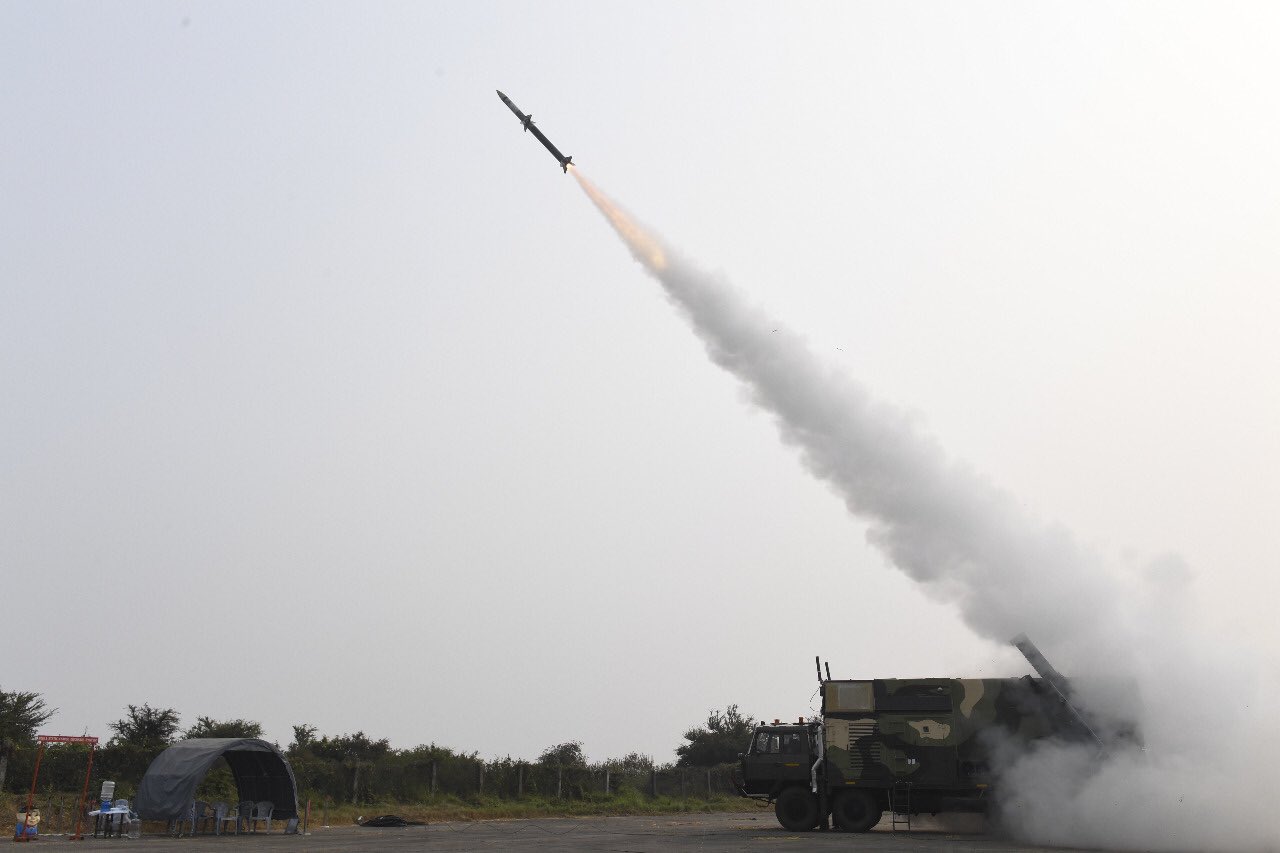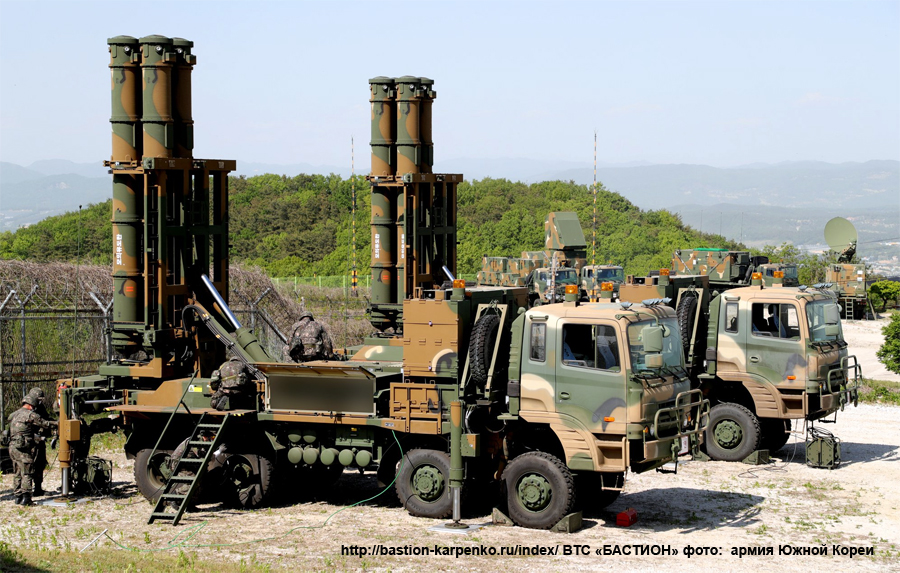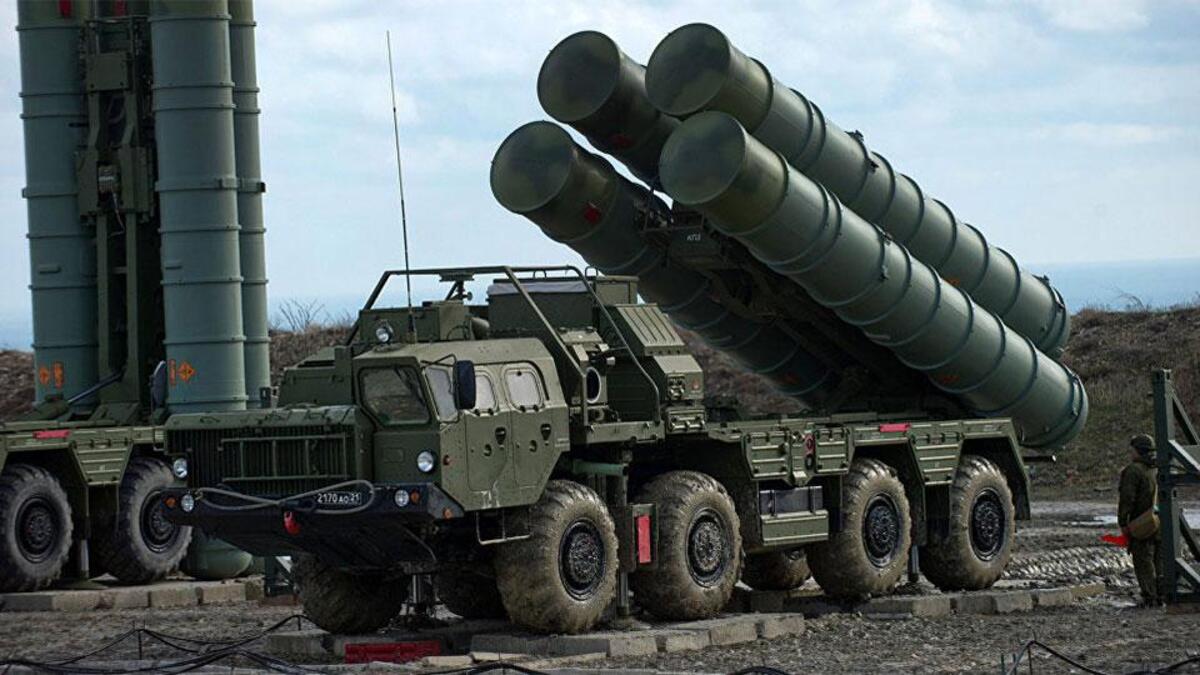South Korea recently signed a contract worth $3.5 billion with the United Arab Emirates (UAE) to export its Cheongung II KM-SAM mid-range surface-to-air missiles (SAM).
This weapon is believed to be quite similar to India’s Akash SAM System, which the UAE had reportedly shown interest in late in December 2020. The question is, did Indian Akash missile systems lose out to South Korean Cheongung II KM-SAM?
UAE’s Interest In Akash
ThePrint had reported in December 2020 quoting sources in the defense and security establishment that at least a dozen nations, including the likes of UAE, Vietnam, and the Philippines, had shown interest in acquiring the Akash system.
Around the same time, the Narendra Modi government had approved the indigenously manufactured missile interceptor system for export. This decision, it was reported, was taken at a meeting of the Cabinet Committee on Security.
Additionally, the government had also set up a high-profile committee consisting of the defense minister, the external affairs minister, and the national security advisor for fast-tracking export permissions.
Defense Minister Rajnath Singh had even tweeted, “So far, Indian defense exports included parts/components, etc. The export of big platforms was minimal. This decision by the Cabinet would help the country to improve its defense products and make them globally competitive.”
The statement from the Defense Ministry said that the export version of Akash would be different from the system in use by the Indian armed forces.

Akash SAM system
The Akash is a mid-range SAM system that was built by India’s state-owned Defence Research and Development Organisation (DRDO). DRDO claims that it is designed to “protect vulnerable areas and vulnerable points from air attacks.”
The weapon system can simultaneously engage multiple targets in a group or autonomous mode. Not only does the system have in-built Electronic Counter-Counter Measures (ECCM) features, but it also has been configured for mobile platforms.
In addition to a missile, the system features a launcher, a control center, and an integral mission guidance system, an arming and explosion mechanism, a multifunctional fire control radar, and a digital autopilot. It also possesses command, control communication, and intelligence (C4I) centers.

Every Akash battery comes with four 3D passive electronically scanned array (PESA) radars and four self-propelled launchers. Each of the launchers has three missiles, with all missiles being interconnected. The battery itself also has a control center and a battery level radar called Rajendra.
The missiles, which have the capability of destroying aircraft within a range of 30 to 35 kilometers, and can carry conventional and nuclear warheads weighing up to 60kg, are designed to be launched from static or mobile platforms.
These could include battle tanks and wheeled trucks. Such an arrangement provides flexible deployment. Akash can handle several targets simultaneously and has the ability to destroy maneuvering targets such as unmanned aerial vehicles (UAVs), cruise missiles, missiles launched from choppers, and fighter aircraft.
The missiles designed for this system are able to fly at supersonic speeds ranging from Mach 2.8 to 3.5. It was reported that the projectiles have a kill probability of 88 percent. These odds can be increased to 98.5 percent by launching the second missile just after five seconds after the launch of the first one.
The Akash system renders multidirectional and multi-target area defense. It has already been inducted and is operational with the Indian Air Force (IAF) and the Army.
UAE-South Korea Deal
South Korean President Moon Jae-in and Emirati Prime Minister Mohammed bin Rashid Al Maktoum met in Dubai earlier this month and signed the biggest arms-export deal that Seoul has ever inked.
In a press release, South Korea’s Defense Acquisition Program Administration (DAPA) revealed that “the UAE is the first foreign nation to operate the Cheongung II.” It further noted that the deal was the consequence of the “bilateral defense cooperation based on mutual trust” between the countries.
DAPA said that in addition to the missile acquisition deal, the two governments also signed a memorandum of understanding (MoU) to collaborate on defense technologies which include the co-development of weapons systems.
Cheongung II KM-SAM
The Cheongung system was developed in Russia by OKB Almaz for the Agency for Defense Development (ADD) with the help of Samsung Thales Corporation, LIG Nex1, and Doosan DST. The extent of localization and industrialization that was carried out in South Korea with reference to this system was enough to let it be considered a local system.
The Cheongung is based on technology derived from the 9M96 missile that is used in the S-350E and S-400 missile systems.
Each missile system comprises a multipurpose radar, a fire control system, and a launch system, along with a group of eight missiles. The full battery of the complex is made up of six 8-cell transporter mounting launchers (TEL) and a PESA X-band multifunctional phased-array 3D radar.
The latter is based on the Russian S-400 missile defense system. The command fire engine is also an integral part of the system battery.

Cheongung is capable of intercepting targets to a range of close to 40 kilometers and up to an altitude of about 15 kilometers. It can simultaneously attack many targets located with its multiple radar system.
With a top speed of Mach 4.5, the missile is capable of quickly changing its flight direction and performing deceptive maneuvers to evade interception systems. Moreover, every missile comes equipped with devices that enable it to continue performing its mission despite electromagnetic interference attempts by adversaries.
Cheongung’s launch system is vertically oriented, and post-launching, the rocket is controlled by the radar. The radar system has the ability to track aircraft, identify on the principle of “friend or foe.”
Did Indian Akash Missiles Lose Out UAE Deal?
There is no official confirmation on whether India ever pitched the Akash system to Abu Dhabi although one media report claimed that the Gulf nation had shown interest in the weapon system.
Nevertheless, in terms of technical capabilities, Cheongung has a greater operational range and its missiles are faster than those of Akash. The UAE must have evaluated these criteria before choosing the South Korean missile system.
According to Abhijit Iyer-Mitra, a defense analyst, “Although the genesis of both the Akash and the Korean KM-SAM is very similar — they’re both derived from Russian systems — the starting point of the Akash is much older; the development process was much longer, with much older, almost obsolete technology.”

“The Korean KM-SAM is derived from the shorter-range versions of the S-400 missile system, which is a much newer Russian system. The KM-SAM is, therefore, a much more modern design,” Iyer-Mitra, Senior Fellow at Institute of Peace and Conflict Studies, New Delhi, told The EurAsian Times.
“Secondly, the KM-SAM has a significantly greater range. Almost about 20 to 30 percent more. It is also canisterized- much more protected against elements, climate, shrapnel etc.
“The third thing is, the KM-SAM can carry 8 missiles, while that number is just 3 for the Akash. Thus, it requires a lot more vehicles to have the same battery number.
“One generally looks at all the components from radar to targeting to everything. The KM-SAM is a much more modern system. Thus, it was only natural that the UAE would pick something more modern.
“In terms of possible future development too, the KM-SAM offers much greater potentialities than the Akash system does. It is also South Korea’s only medium-range system. In India, we’ve got about 2 to 4 different kinds of systems here and there. The Navy uses a different kind of system that is imported. In terms of both industrial confidence and modernization, this isn’t very good.
“Additionally, South Korea is a renowned manufacturer and India is not. All these things play into that decision.”
Coming back to the question of whether India pitched Akash to the UAE, Iyer-Mitra said, “But let’s be clear, the Indian system was never in the race. Evaluation is one thing, but being serious about something is completely different. Look at UAE’s interest through this analogy. Just because someone enters a showroom to look at a car, doesn’t mean that they considered the car particularly seriously,” Mitra concluded.
- Contact the author at: shreyya.mundhra@gmail.com
- Follow EurAsian Times on Google News




